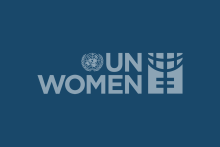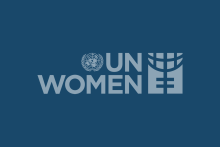Putting survivors at the forefront of the global movement to end female genital mutilation
“More than 200 million girls and women alive today have undergone female genital mutilation. This year, nearly 4.4 million girls will be at risk of this harmful practice. This equates to more than 12,000 cases every day.
“In keeping with the commitments outlined in the Beijing Declaration and Platform for Action, those agreed during the 25th Anniversary of the International Conference on Population and Development , Generation Equality, and other normative frameworks including The Convention on the Elimination of All Forms of Discrimination Against Women and the Convention on the Rights of the Child and their general recommendations, as well as Sustainable Development Goal target 5.3, we reiterate our commitment to prevent and respond to this harmful practice against women and girls.
“Female genital mutilation is a violation of women’s and girls’ rights, one that endangers their physical and mental health and limits their potential to lead healthy and fulfilling lives. It increases their risk of serious pain, bleeding and infections and the likelihood of other health complications later in life, including risks during childbirth, which can imperil the lives of their newborns.
“That is why, in our pursuit of a world free of discrimination and practices that harm girls and women, it is imperative that we turn our attention to the voices that matter most – the voices of survivors.
“We must amplify the voices of survivors to raise awareness and inspire collective action, and promote their power and autonomy by ensuring they have an active role in prevention and response interventions.
“Survivors have first-hand knowledge of the challenges they face and the tools needed to eliminate the practice. It is crucial that we invest in survivor-led movements, especially at the grassroots level, by dedicating resources that will advance their efforts.
“We also must ensure that comprehensive and culturally sensitive services are available and accessible. This includes strengthening the provision of health care and social and legal services to support survivors.
“UNFPA and UNICEF, as the lead agencies of the Global Joint Progamme on Eliminating FGM, OHCHR, UN Women, and WHO, and other United Nations entities remain steadfast in partnering with survivors as community champions and leaders and ensuring their voices and perspectives inform programmes to prevent and respond to FGM. Indeed, investing in movement-building and promoting girls’ and women’s agency is at the core of the UN Joint Programme on Eliminating FGM.
“We celebrate progress that has been achieved: The practice of FGM has been declining over the last three decades, and in the 31 countries with nationally representative prevalence data, around 1 in 3 girls aged 15 to 19 today have undergone the practice versus 1 in 2 in the 1990s.
“As of last year, the Joint Programme supported more than 11,000 organizations, of which 83 per cent were grassroots organizations partnering with coalitions and survivor-led movements, advocating for changes in policies and laws, and championing changes to social and gender norms.
“Yet there is an urgent need for even more targeted, coordinated and sustained efforts if we are to achieve our common goal of ending female genital mutilation by 2030. Together, led by survivors, we can consign this harmful practice to history, once and for all.”

